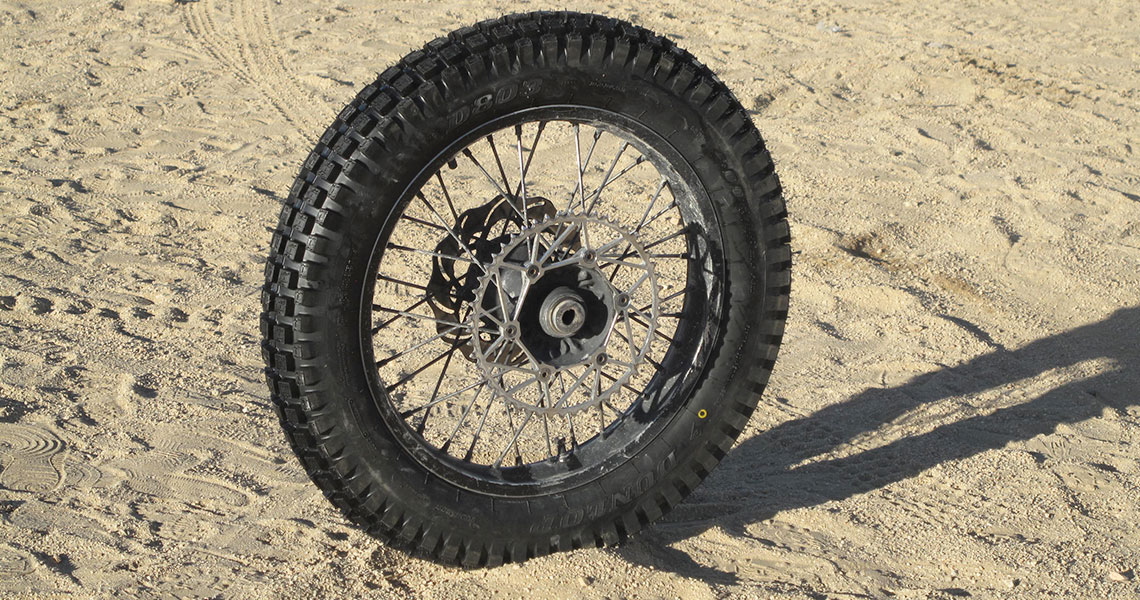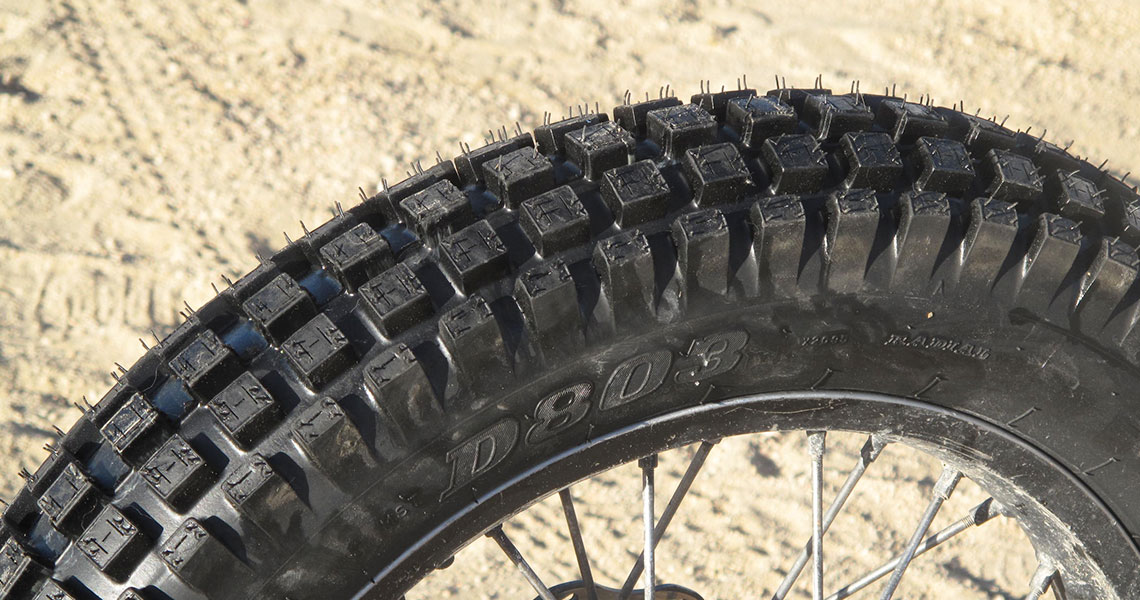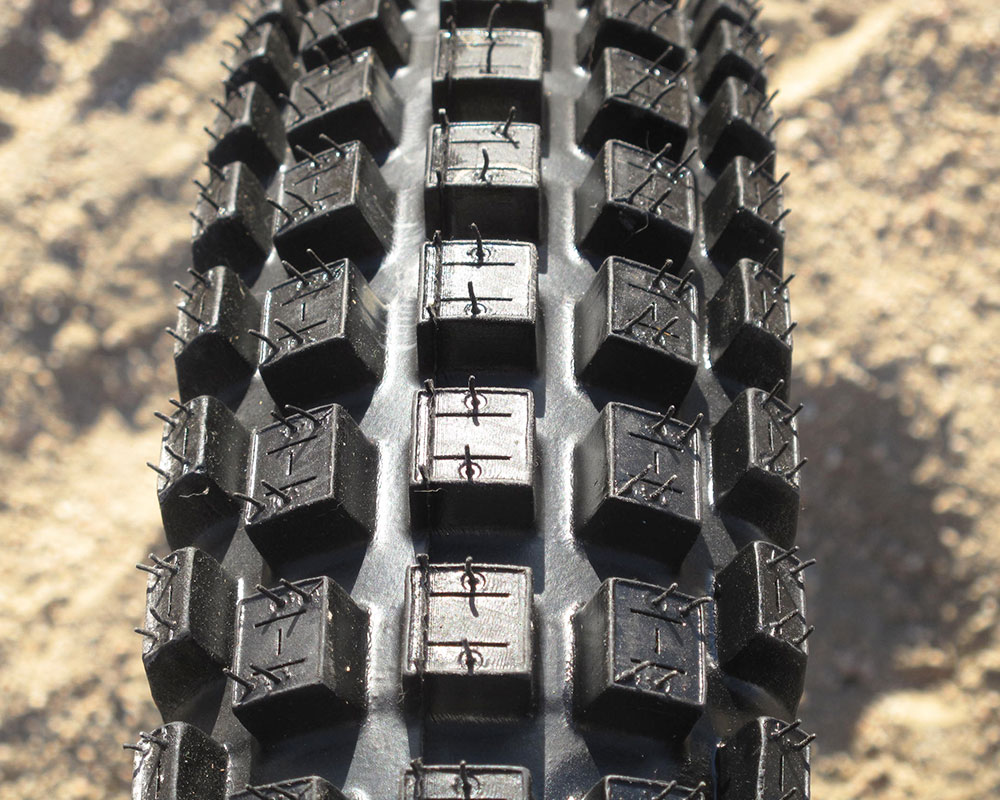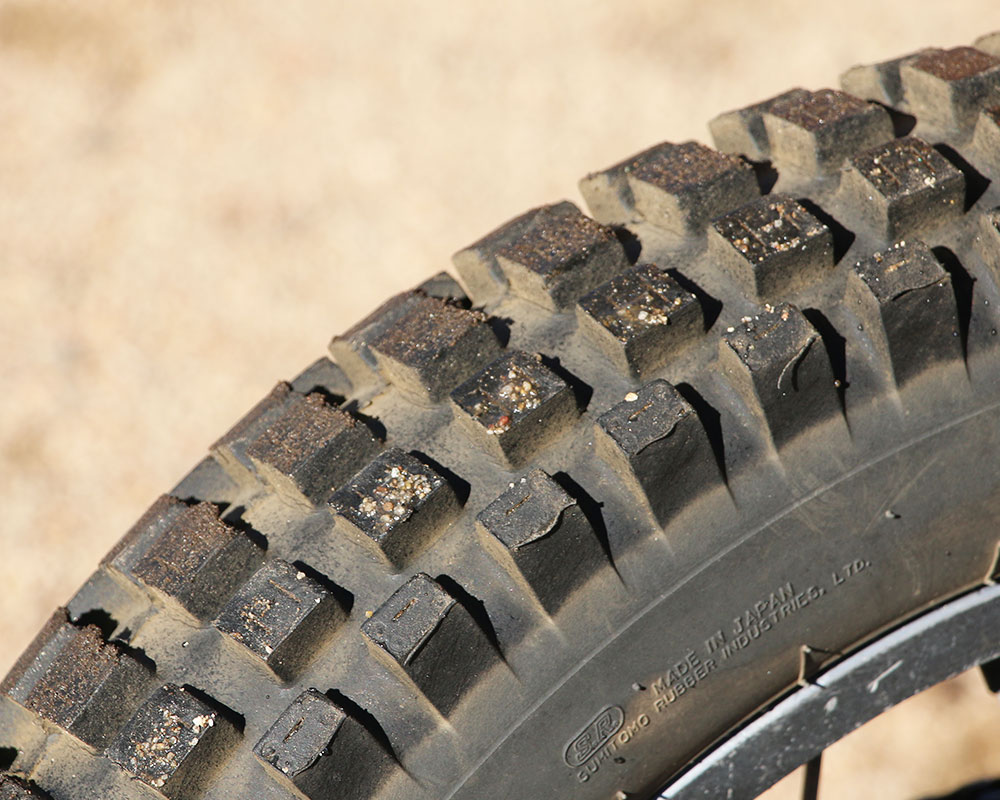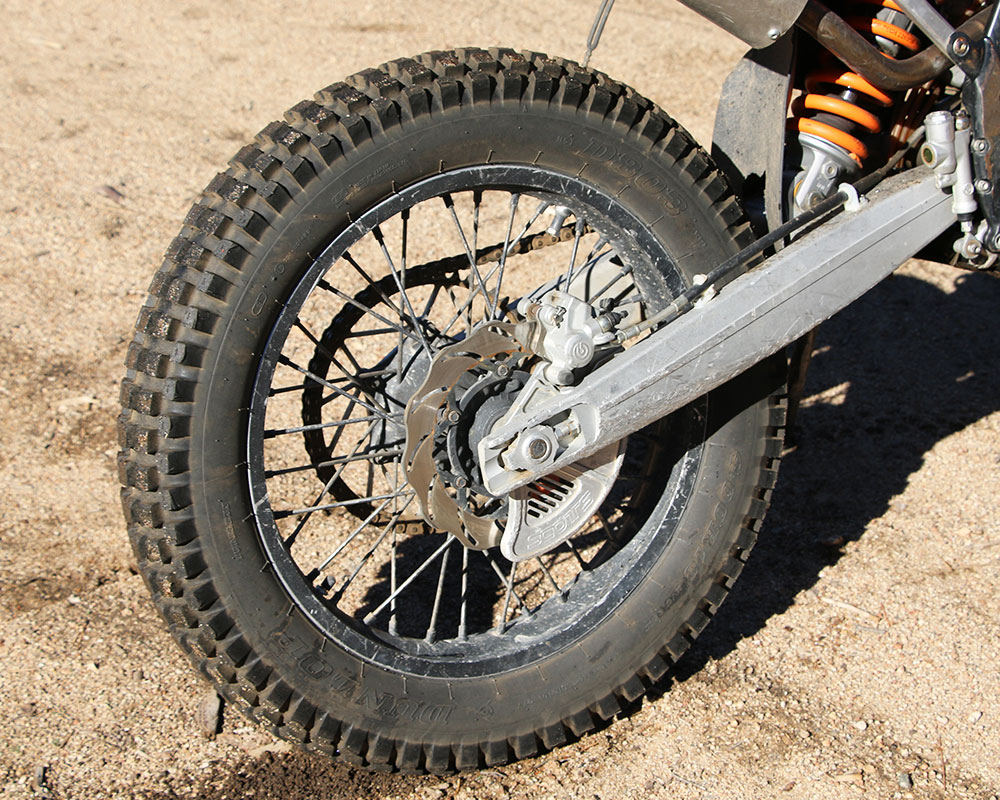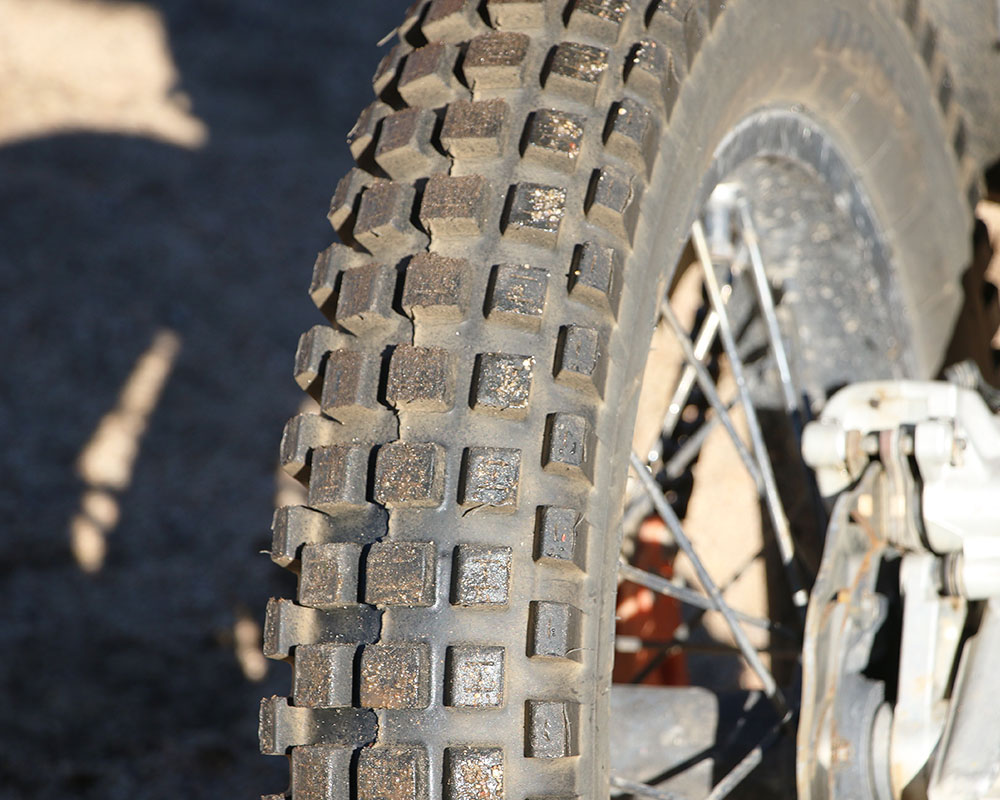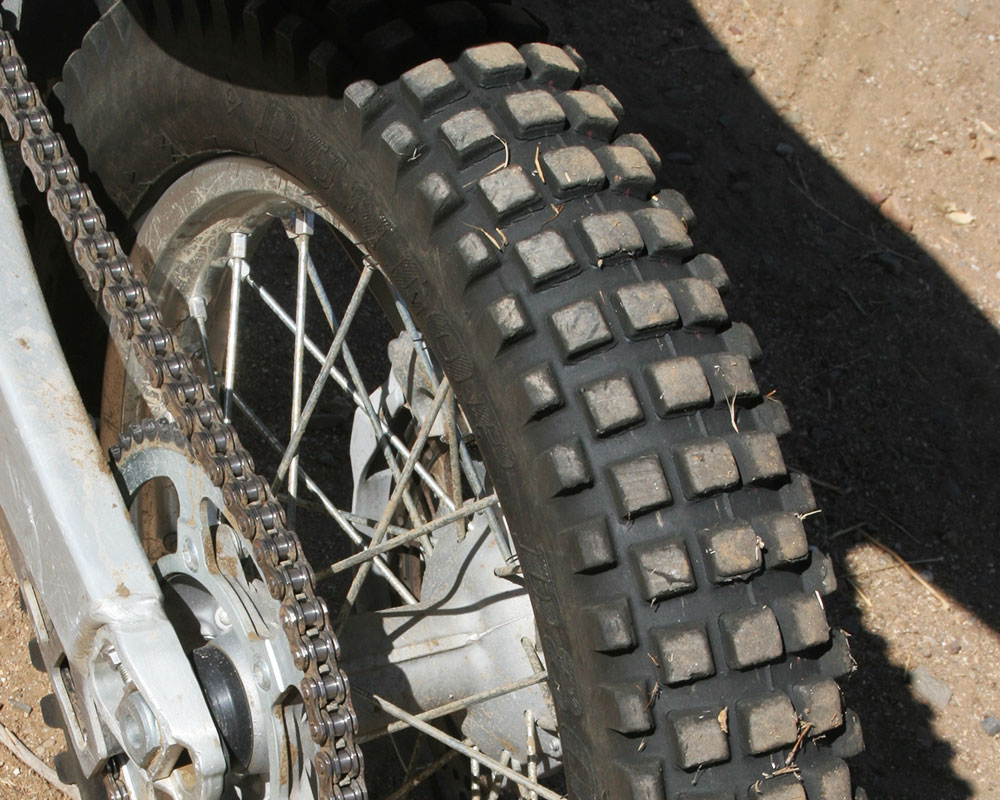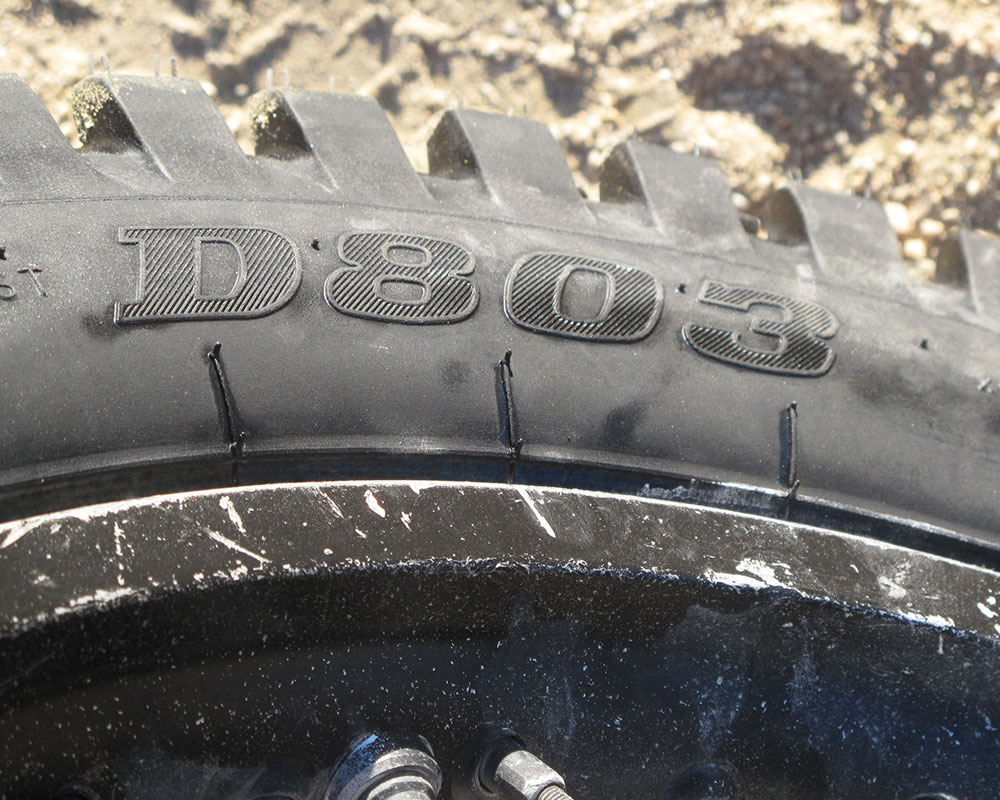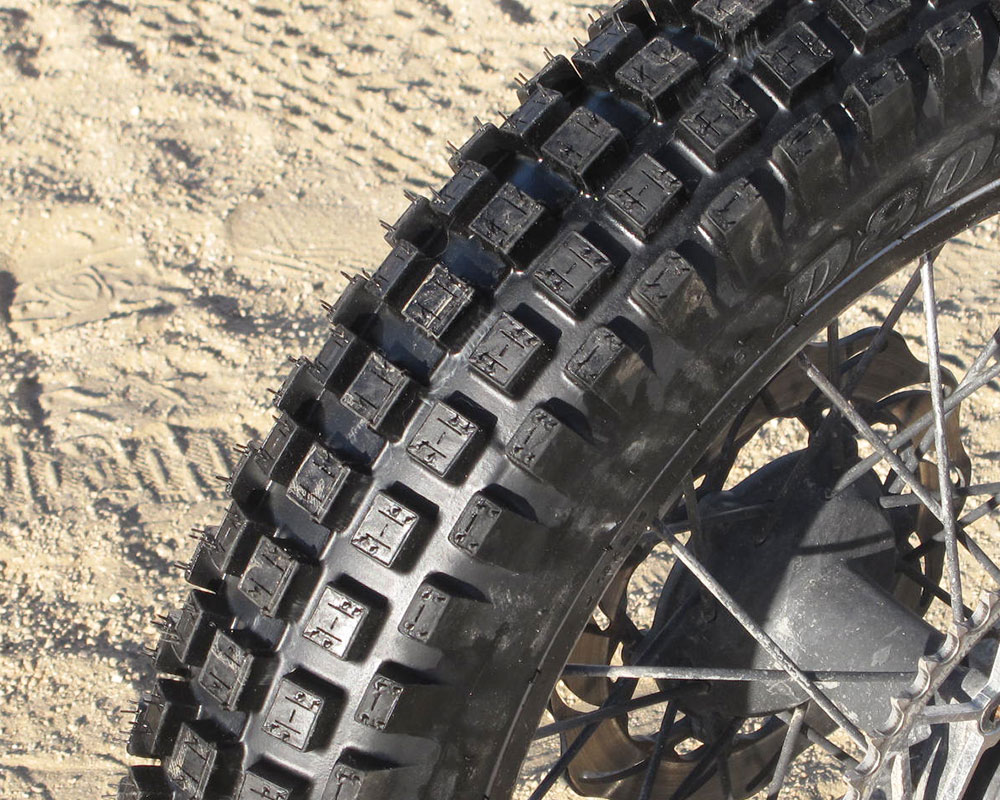Dunlop D803 Rear Trials Tire
Company: Dunlop
Price: $147.03
- Sticky trail riding tire that has a rubbery bite.
- Just enough carcass compliance without excessive wallow at trail speeds.
- Traction stays high even when the tire looks worn.
- Can not handle speeds over 55 MPH for any length of time.
- Not DOT approved. Not for dual purpose use.
What it is
- A trials competition tire that is popular for trail riding.
Dunlop created the D803 specifically as a trials competition tire and it has transformed into a trail riding choice over the years. It uses a radial design and a tight and typical trials block knobby pattern to deliver what Dunlop calls superior grip. The rear tire is available in a 4.00RX18 and there is also a matching front but we did not test that.
How it works
- Great stick in adverse conditions with an excellent rubber compound.
- Don't speed! Knobs will detach from the casing.
- Adds suspension compliance through a softer carcass.
Dunlop introduced the D803 right about the time that trials tires were gaining mainstream popularity for trail riding and has kept the tire in the line, unchanged, since then. The D803 replaced the D801, which in reality was a better tire for trail riding overall, yet the D803 was a far superior trials tire for competition. Between the Michelin and the Dunlop you have the two best gripping tires out there based on rubber compounds and some very unique carcass construction. And since these tires were never really designed for trail riding on heavier off-road bikes, nor the speeds these bikes can go, the tire sufferers some inherent issues. First off, if you exceed 50-60 MPH for more than ten minutes on road or hard dirt the center row of knobbies will start flying off. They delaminate and tear off the tire carcass. There is also the wallow and wobble the tire has at lower pressures and the affect it has on the motorcycle's handling, though the suspension compliance does tend to get better.
Those pitfalls aside and then you can talk about why the tire is such a good choice for trail riding. It provides some of the best grip and traction you will find on most any surface, especially slippery ones when in comparison to a true knobby. In general trials tires work best with riders who do not like to spin or skid the rear wheel. They tend to plane and continue to spin or slide once in motion. But here is where the Dunlop shines compared to most tires with this style of tread pattern. It’s softer rubber compound comes to the aid and grips, especially when the tire warms (like in a burnout) on a rock. It’s tacky nature gives additional bite where others will just keep on spinning. Even in wet or cold conditions the rubber has more grip if you are comparing compound to compound than just about anything else out there. Even on ice or snow--which under most conditions are a trials tire’s nemesis. The only other soil situation that the tire’s performance is rather poor in is bottomless mud that packs onto the tire. The cleaning ability of the tire, like almost every trials tire is very poor. Yet the traction in sand is impressive, the D803 hooks up and tracks way better than you think it would and it even resists sliding out when put on the edge way better than it should for having a less open block on the sidewall and a fairly square shoulder.
We ran the tire at pressures between 7 and 14 PSI depending on a few factors. The more we wanted flat resistance and the faster or more aggressive we rode the bike, the higher we set the pressure. We felt the ideal for aggressive or fast riding was 13 PSI as here you are still rewarded with excellent grip and the ability of the carcass to conform and bend to the terrain without the concern for an easy pinch flat. Plus the wobble and roll of the tire was minimal when pushing in and out of turns. As you get lower with the pressure, especially in very slippery conditions lower pressures allow the tire to flatten out on the ground and stick more rubber onto dirt. More in a front to rear direction then across side-to-side, likely a benefit of the radial design. Going below 7 PSI we felt the handling start to go out the window from wallow and we were now smacking the rim on rocks and really risking a pinch flat.
The durability of the tire is great as long as you don’t do any extended high speed. You can run the bike up to a higher speed in short bursts, but any consistent high speed sees the knobbies flying off the tire. It sounds like someone is shooting a pellet gun at your back fender if you go fast enough. And the performance stays pretty high level even with the tire worn down to ⅓ of its normal knob height. Then the side knobs are usually tearing off anyways, on our scale we’d call it a 1000 mile tire. You can take small chunks out of the knobs on sharp rocks but the performance is not affected. The biggest change is when you wear past the siping squares on the middle knobs, then it is all down to the rubber compound working.
The Dunlop D803 is one of the two best sticky trials tires out there based on its rubber compound and construction. We’d call it a performance trials tire for trail riding.It is not DOT approved nor will it last in a dual-purpose type riding so that makes it less than ideal for a lot of riders. It isn't one of the less expensive trials tires out there but for the $10-$20 dollars more you'll pay for this one, you'll definitely make it up in the traction department. If you ride the nasty and slippery and stay in there, this is a great tire.
Help support this site by purchasing through this link:
Leave a Reply
